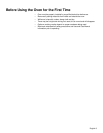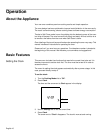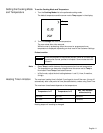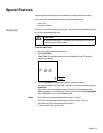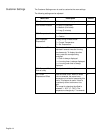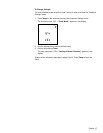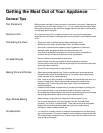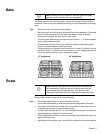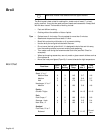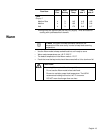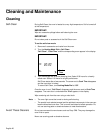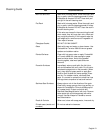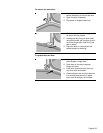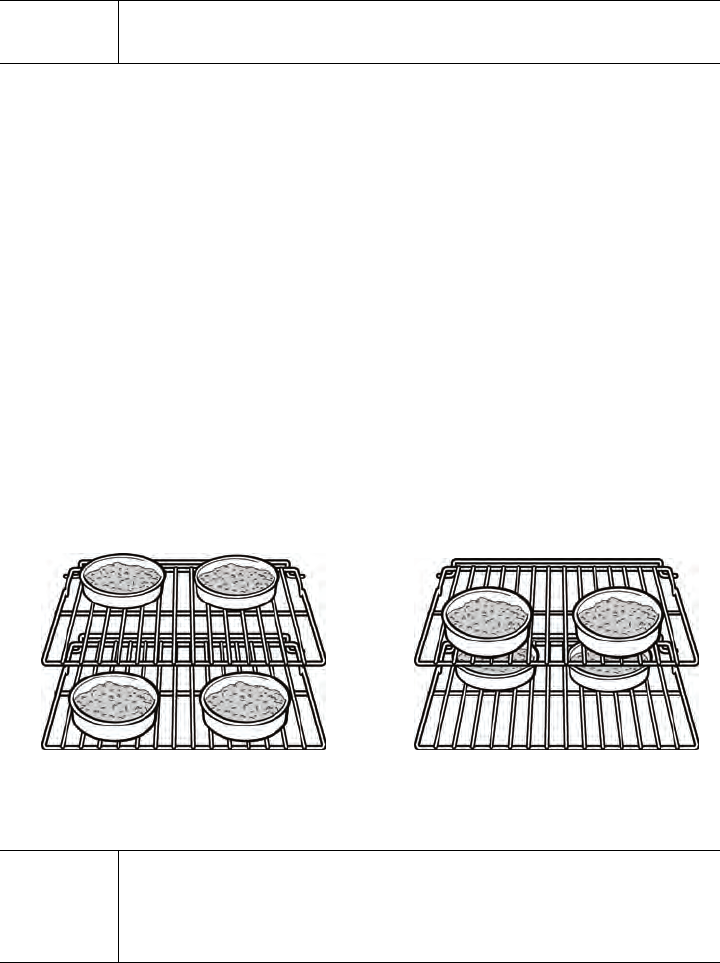
English 17
Bake
The Bake mode can be used to prepare a variety of food items, from pastries to
casseroles. Refer to recipe or package directions for oven temperature and baking
time.
Tips • Preheat the oven if the recipe recommends it.
• Baking time will vary with the size, shape and finish of the bakeware. Dark metal
pans or nonstick coatings will cook faster with darker results. Insulated
bakeware will lengthen the cook time for most foods.
• For best results, bake food on a single rack with at least 1–1
1
/
2
" space between
pans or dishes and oven walls.
• Eliminate heat loss from the oven by using the window to periodically check
food for doneness instead of opening the door.
• If multiple racks are necessary, use a maximum of 2 racks. For cakes, use rack
positions 3 and 5. For cookies, use rack positions 1 and 4. Stagger pans so that
one is not directly above the other (see graphic below).
Roast
Roast is best suited for large cuts of meat and poultry.
Tips: • Use a high-sided broil pan, or cover dish with a lid or foil.
• Use a meat thermometer to determine the internal temperature of the meat.
• If the meat is browned to your liking, but is not yet done, a small strip of foil can
be placed over the meat to prevent overbrowning.
• Let meat stand covered with foil 10–15 minutes after removing it from the oven.
• Roasting bags are suitable for use in this mode.
• When roasting whole chicken or turkey, tuck wings behind back and loosely tie
legs with kitchen string.
• Add liquids, such as water, juice, wine, bouillon or stock for flavor and moisture.
t
Bake is cooking with dry, heated air. Both the upper and lower
elements cycle to maintain the oven temperature.
27” appliances: 30” appliances:
t
Roast uses both the upper and lower elements to maintain the
oven temperature. Roasting uses more intense heat from the
upper element than the lower element. This results in more
browning of the exterior while the inside remains especially moist.



